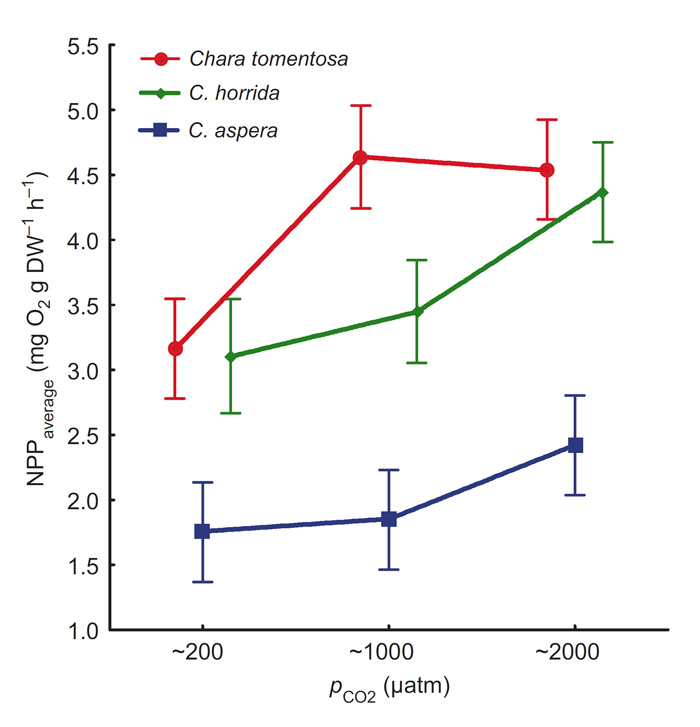| Tweet | Follow @co2science |
Paper Reviewed
Pajusalu, L., Martin, G., Põllumäe, A., Torn, K. and Paalme, T. 2015. Direct effects of increased CO2 concentrations in seawater on the net primary production of charophytes in a shallow, coastal, brackish-water ecosystem. Boreal Environment Research 20: 413-422.
Introducing the subject of their study, Pajusalu et al. (2015) write that charophytes are "submerged, rooted algae with well-developed complex thalli and morphology" that grow in both marine and fresh waters, additionally noting that "charophyte communities are important habitats for a number of invertebrate species and epiphytic algae and they provide feeding and nursery areas for several species of fish and birds," citing the works of Martin et al. (2003) and Torn (2008). Yet despite these important functions, the authors say the response of charophyte communities to increasing CO2 concentrations, i.e., ocean acidification, "is not known."
In an effort to remedy this situation, Pajusalu et al. conducted an experiment to measure the net primary production of three charophyte species (Chara aspera, Chara horrida and Chara tomentosa) exposed to three different pCO2 levels (approximately 2000, 1000 and 200 µatm) over a period of eight days. The experiment was performed during the summer in field mesocosms constructed in a shallow bay located in the Gulf of Riga, northeast Baltic Sea (58.37°N, 22.98°E).
As illustrated in the figure below, net primary production (NPP) varied between charophyte species and pCO2 treatment level, where higher pCO2 stimulated NPP from 5 to 50 percent above ambient (~200 µatm and described by the authors as "natural" for this region of the sea). And as a result of these findings, they note in the conclusion of their paper that "increased CO2 levels in brackish water may enhance the photosynthetic activity of charophytes in shallow coastal ecosystems under summer conditions," since "the natural content of CO2 in brackish water most likely limits the primary production of charophytes."

Figure 1. Mean net primary production (NPP) rates (n = 24, error bars are ± 95% CI) measured during the entire eight-day experimental period for the three tested charophyte species at different brackish-water pCO2 levels. Adapted from Pajusalu et al. (2015).
References
Martin, G., Torn, K., Blindow, I., Schubert, H., Munsterhjelm, R. and Henricson, C. 2003. Introduction to charophytes. In: Schubert, H. and Blindow, I. (eds.), Charophytes of the Baltic Sea, BMB Publication no. 19, Koeltz Scientific, Königstein, pp. 3-14.
Torn, K. 2008. Distribution and ecology of charophytes in the Baltic Sea. Ph.D. thesis, University of Tartu.
Posted 20 October 2015



